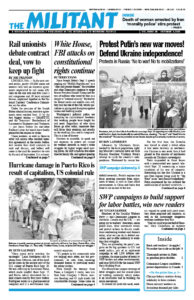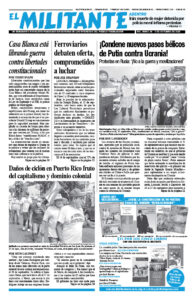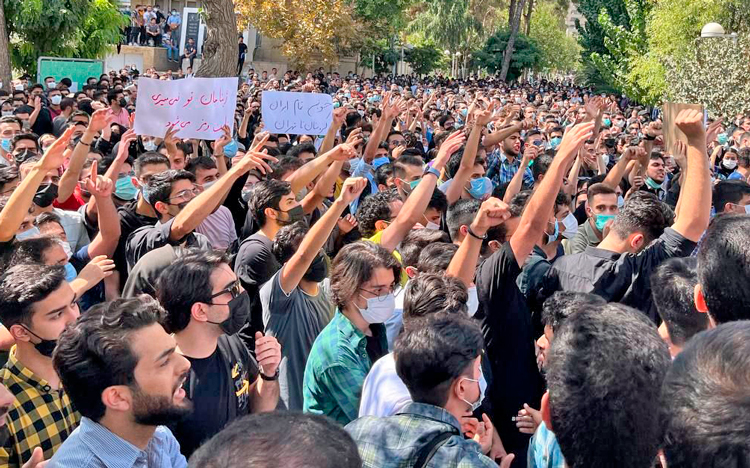Protests spread in Iran after Mahsa Amini, a 22-year-old Kurdish woman, died Sept. 16 in Tehran. She was detained by the widely hated morality police — “Guidance Patrols” — three days earlier, along with other women, for allegedly violating the dress code law, which requires women to cover their hair. Amini was visiting the capital with her family when she was arrested.
Tehran police claim that Amini had a heart attack at the police station where the women were taken for “explanation and instruction” on proper dress. The cops released a video they say shows there was no “physical contact” between officers and Amini. Family members say they suspect she had been badly beaten. Amini died in a hospital after three days in a coma.
Over 1,000 people joined the Sept. 17 funeral in her Kurdish hometown of Saqqez, where many women took off their headscarves and waved them in the air. Protests spread to the Kurdish city of Sanandaj, in northwest Iran, and in Tehran, Isfahan, Sari and other cities.
The outrage over her death was so great that Iranian President Ebrahim Raisi informed the press he had called the family and promised there would be an investigation. Amini’s father, Amjad Amini, said he had requested an autopsy report, but that was denied. The day after her funeral nearly all Iranian newspapers featured her story on their front page. The daily Javan stated, “The nation has expressed its sorrow over Mahsa’s sad death.” Etemad denounced “multiple instances of violence by the morality police.” The government daily Iran newspaper, however, accused protesters of “using an unfortunate incident to incite the nation against the government and the president.”
Police and the government’s Revolutionary Guard attacked several of the protests with teargas and water cannons and in some cases live ammunition.
People should be able to wear whatever they want, taxi driver Mohammad Zamani told Rudaw news agency in Sanandaj. “How is this the age of forcing people to wear hijab?”


